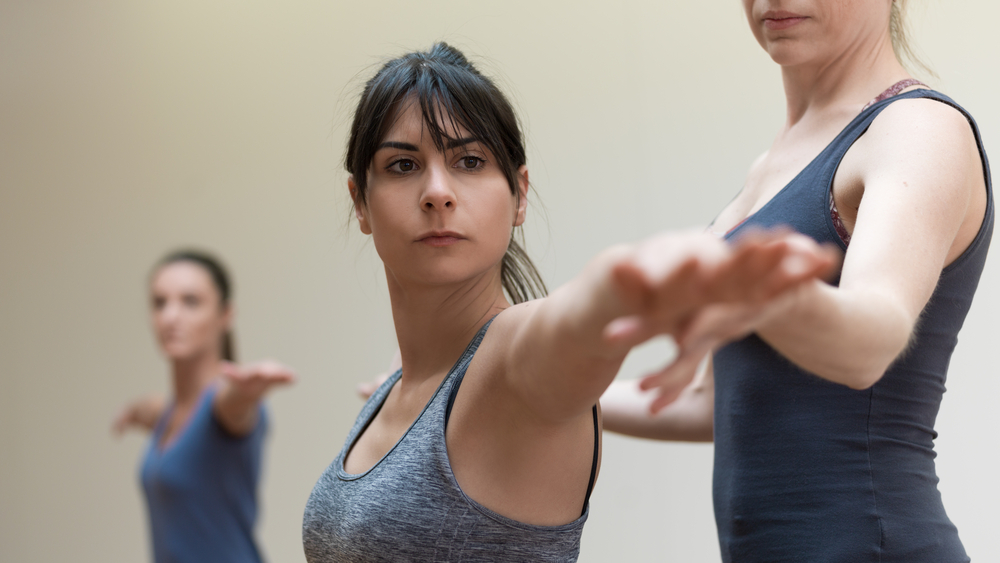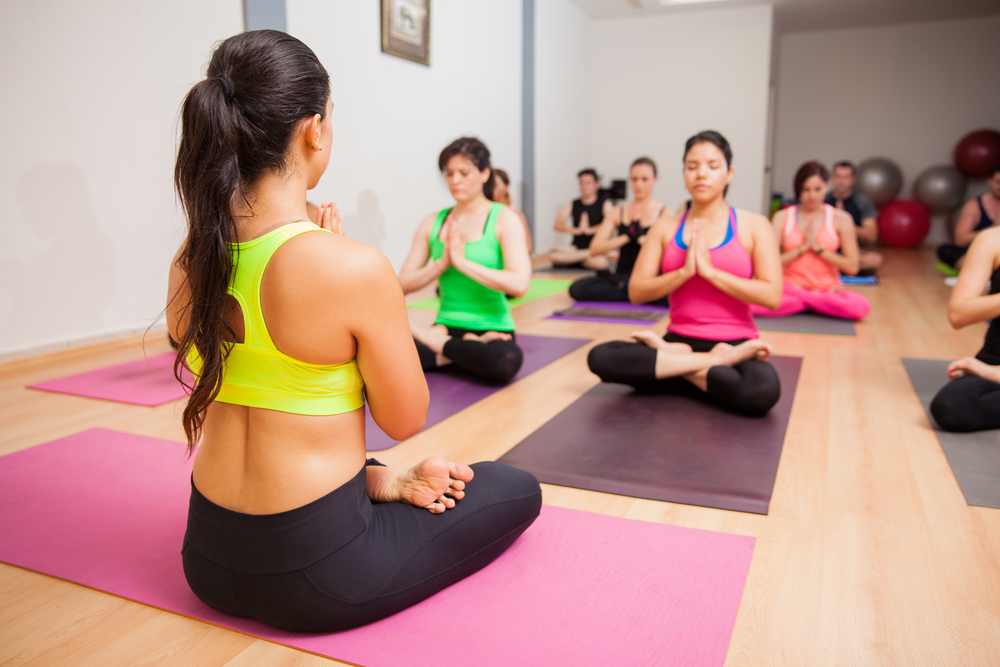- Become a yoga teacher and help others find their practice
- Get certified and learn from the best in the industry
- Learn about different types of yoga and teaching styles
- Balance your life while making a difference in the lives of others
If you’ve ever dreamed of becoming a yoga teacher, now is the time to make that dream come true! Becoming a yoga teacher isn’t just about having the knowledge and understanding of poses – it requires dedication, commitment, and hard work. In this blog post, we will discuss what qualifications are needed to become a yoga teacher and explore both the benefits and challenges associated with teaching others how to practice their own physical self-care journey through yoga. We’ll also take an in-depth look at developing your unique teaching style and building your clientele base, as well as tips for staying motivated on your path toward becoming a certified instructor. Finally, let’s not forget about creating a balance between life and being able to teach while still taking care of yourself too! So if you’re ready – join us on our journey into exploring everything there is now regarding “becoming a Yoga Teacher.”
Table of Contents:
Qualifications for Becoming a Yoga Teacher
Becoming a yoga teacher requires more than just understanding the poses and sequences. To be successful, you must also have the right qualifications.
Education Requirements: A primary education in anatomy, physiology, and kinesiology is essential for any aspiring yoga instructor. You should also have a strong knowledge of alignment principles to ensure your students practice safely. Most studios require 200 hours of training from an accredited program before hiring you as a teacher.
Certification Requirements: Many studios require their instructors to be certified by either Yoga Alliance or another reputable organization such as IAYT (International Association of Yoga Therapists). This certification ensures that teachers have met specific standards regarding teaching experience and educational background. It’s important to note that some states may require additional certifications depending on where you plan to teach.
As with any physical activity, there are specific requirements for becoming a yoga teacher. You should be able to demonstrate poses correctly while providing verbal cues and corrections when necessary; this includes holding postures for extended periods without losing form or balance. Additionally, good stamina is necessary since classes can last up to two hours.
Benefits of Becoming a Yoga Teacher
Becoming a yoga teacher can be an enriching experience. Not only does it provide financial benefits, but it also offers invaluable emotional and physical advantages.
Financial Benefits: Teaching yoga is a great way to make money while doing something you love. Depending on the studio or organization you work for, you may have the opportunity to earn additional income through private classes or workshops. Additionally, many studios offer discounts on memberships and merchandise for their instructors, which can help save money in the long run.
Emotional Benefits: As a yoga teacher, you will have the chance to connect with your students in meaningful ways as they learn from your guidance and expertise. This connection often leads to strong bonds of trust between instructor and student that can last beyond just one class session. Furthermore, teaching yoga empowers women to share their knowledge and passion with others seeking instruction. This experience is both humbling and gratifying at once.
Of course, numerous physical benefits are also associated with teaching yoga. Through regular practice of poses (asanas) combined with breathwork (pranayama), teachers gain increased strength, flexibility, balance, and coordination – all of which improve overall health over time. Additionally, daily meditation helps cultivate mindfulness, which has been proven beneficial for mental well-being.
Challenges of Becoming a Yoga Teacher
Becoming a yoga teacher is an enriching experience, but it also comes with challenges. Time commitment, stressful environments, and competition in the market are just some of the obstacles you may face as a yoga instructor.
Time Commitment: Teaching yoga can be time-consuming, especially if you teach multiple weekly classes or run your studio. You’ll need to dedicate time to lesson planning and preparing for each class. To ensure you don’t burn out from all the extra work, try to create a schedule that works best for you and stick to it.
Stressful Environment: Teaching in front of others can be intimidating at first, but with practice and preparation, it gets easier over time. To help manage stress levels during class settings, take deep breaths before starting each session and focus on connecting with your students rather than worrying about what they think of your teaching style.
With so many teachers offering similar services, it can be challenging to stand out when marketing yourself as an instructor. The key is to find ways to differentiate yourself by creating unique sequences or workshops to attract potential clients who appreciate your particular style of teaching yoga. This could include developing specialized classes for specific age groups or skill levels, focusing on a particular type of yoga practice, or even running retreats and workshops in different locations. By creating something special and unique, you’ll be able to draw more attention and interest to your services.
Developing Your Teaching Style
Developing your teaching style is integral to becoming a successful yoga teacher. Identify your strengths and weaknesses as an instructor to create a unique style that will set you apart from other instructors.
Identifying Your Strengths and Weaknesses as an Instructor: Knowing what areas you excel at, such as cueing, sequencing, or adjusting postures, can help you focus on honing those skills even further. Similarly, being aware of areas where you need improvement can also benefit growth and development. Taking classes with experienced teachers or attending workshops are great ways to gain insight into different approaches and styles of teaching.
Understanding Different Types of Yoga Practices: Many yoga practices are available today, ranging from gentle restorative classes to more vigorous vinyasa flows. Understanding the differences between each type is critical in creating effective sequences for your lessons that meet the needs of students while still staying true to your style.
Creating Unique Sequences and Flows for Classes: Once you have identified your strengths and weaknesses and familiarized yourself with various yoga practices, it’s time to start creating unique sequences explicitly tailored to your student’s needs while keeping them safe throughout their practice. Incorporating creative transitions between poses or adding variations on traditional postures can help keep things interesting for newbies and seasoned yogis alike.
Building Your Clientele as a Yoga Teacher
Building Your Clientele as a Yoga Teacher is integral to success in the yoga industry. Networking with other instructors and studios can benefit both parties involved, allowing you to collaborate on events or classes that will draw more attention from potential clients. Social media platforms such as Instagram, Facebook, and YouTube are great ways to promote yourself and your services to a larger audience. Creating specialized workshops or retreats that focus on specific topics or themes can also help attract new students who may not have considered taking regular classes.
Networking with Other Instructors and Studios is critical when building your clientele as a yoga teacher. Reaching out to local studios in your area and connecting with other teachers interested in collaborating on projects is essential. This could include hosting joint classes at different locations, offering discounts for multiple-class packages, or even organizing special events like yoga festivals or retreats where people can learn about different styles of practice from experienced instructors all under one roof.
Utilizing Social Media Platforms to Promote Yourself is another excellent way to build your clientele as a yoga teacher. Posting regularly about upcoming classes, workshops, retreats, etc., sharing inspiring quotes related to the practice of yoga (or any other topic you feel passionate about), and creating short videos demonstrating poses/sequences are all excellent ways of getting the word out there about what you do. You can also use hashtags relevant to your niche so that people searching for specific topics will find you easily online.
Creating Specialized Workshops or Retreats to Attract Clients is another effective strategy for building up your client base as a yoga teacher. These types of experiences offer something unique compared to traditional class settings; they provide an opportunity for deeper exploration into particular aspects of practice while allowing participants time away from their everyday lives, which often leads them to feel refreshed afterward. Additionally, suppose you partner up with other teachers. In that case, this opens up possibilities for combining skillsets, making the experience even more exciting and valuable than just attending regular classes alone.
Staying Motivated as a Yoga Teacher
Staying motivated as a yoga teacher can be difficult sometimes, but setting goals and celebrating achievements is an integral part of the process. Whether it’s taking on a new class or workshop, attending continuing education opportunities to refresh your practice, or simply trying something new in your classes – having short-term and long-term goals that you can work towards will help keep you inspired and motivated. Taking time for self-care is also essential for staying motivated. Make sure to take breaks when needed, get enough restful sleep each night, eat nutritious meals throughout the day, and find relaxation methods such as meditation or exercise. Additionally, supportive friends or family members who understand what it takes to become successful yoga teachers can make all the difference when tough or challenging situations arise during classes or workshops.
Continuing Education Opportunities To Refresh Your Practice: Continuing education opportunities are great for refreshing your practice by learning new techniques from experienced instructors and expanding your knowledge base about different yoga styles. You may want to attend conferences related to teaching yoga specifically to learn more about topics like anatomy & physiology for teachers, sequencing & alignment principles for postures & flows, how to use props effectively in classes, etc.. Additionally, there are many online courses available that offer certifications upon completion if desired.
Setting Goals And Celebrating Achievements: Setting both short-term and long-term goals helps keep motivation levels high while working towards becoming a successful yoga instructor. Short-term goals could include mastering certain poses within specific time frames, while longer-term ones could involve creating unique sequences & flows for upcoming classes/workshops etc.. It’s essential to set these achievable objectives and celebrate them once they have been accomplished. This could mean treating yourself with something special after completing a course/workshop successfully or even giving yourself some extra downtime after achieving one of those hard-earned milestones.
Taking time for self-care and reflection is key to staying focused on teaching while avoiding burnout due to exhaustion from overworking oneself too much without proper rest periods between sessions. Making sure you are getting enough restful sleep each night, eating nutritious meals throughout the day, and finding ways to relax, such as meditation or exercise, will help ensure optimal performance levels when leading classes. Furthermore, reflection plays an important role here too. Taking moments now and again to reflect on where you currently stand as an instructor (what went well? What didn’t go so well?) allows us to gain valuable insight into our progress, leading to better decision-making in the future.
Creating Balance in Your Life as a Yoga Teacher
Creating balance as a yoga teacher is essential for maintaining a healthy lifestyle and providing quality instruction to your students. Prioritizing family, friends, and other interests outside of teaching yoga can help you stay grounded and connected with the people who matter most. Spending time away from teaching with loved ones can benefit both parties. It also allows you to recharge mentally to have more energy and enthusiasm when teaching again.
Managing stress levels through meditation, exercise, or other activities is another essential part of creating balance in your life as a yoga teacher. Meditation can help clear your mind of any worries or anxieties that may arise while teaching classes or preparing for them. Exercise helps keep your body strong so you can move through poses without strain or injury during class demonstrations. Other activities, such as reading books, listening to music, going on walks outdoors, etc., can provide much-needed relaxation after long days spent teaching multiple classes back-to-back.
Finally, finding ways to connect with nature regularly is vital for creating balance in your life as a yoga teacher since it allows us to appreciate the beauty around us while temporarily taking our minds off work-related matters. Whether it’s spending time gardening at home, walking barefoot along the beach, hiking up mountainsides, or camping under starry skies – immersing yourself in nature has been proven scientifically beneficial for physical health and emotional wellbeing. So make sure to take some moments each day (or week) just for yourself.
FAQs
How long does it take to be a yoga instructor?
The time it takes to become a yoga instructor depends on the individual and their experience level. Generally, most people will need to complete at least 200 hours of teacher training to be certified as a yoga instructor. This can take anywhere from 6 months to 2 years, depending on how much time is dedicated each week and if any additional certifications are sought. Some instructors may pursue more advanced certifications, such as becoming an Advanced Yoga Teacher or Therapeutic Yoga Teacher, which could require even more hours of study and practice.
Can yoga teachers make money?
Yes, yoga teachers can make money. With the proper training and qualifications, they can become certified instructors who can teach classes at gyms, studios, or even online. They may also be able to offer private lessons for a fee or create their business teaching group classes. Additionally, some yoga teachers successfully create instructional videos and books they can sell online. With dedication and hard work, yoga teachers can make a living from their passion for teaching others how to practice yoga.
Is it worth training as a yoga teacher?
Yes, it is worth training as a yoga teacher. Becoming a certified yoga instructor can open up many opportunities to share your knowledge and passion with others. You will gain the skills necessary to teach safe and effective classes while also learning how to create meaningful connections with students. Additionally, you may find that teaching yoga provides you with an additional source of income or even opens up new career paths in the wellness industry. Becoming a certified yoga teacher can be personally and professionally rewarding.
Is it hard to be a yoga instructor?
Being a yoga instructor can be challenging, but it is also gratifying. It requires dedication and commitment to learning the practice of yoga and the ability to teach others effectively. Instructors must understand anatomy and physiology to guide students through poses safely and adequately. They must also be able to guide breathing techniques, meditation, and other aspects of yoga philosophy. Being a successful instructor takes time and effort. Still, hard work can become a fulfilling career path for those passionate about helping others find peace within themselves through their practice.
Marketing Yourself as a Yoga Teacher
As a yoga teacher, it is essential to market yourself to attract students. Several ways you can do this will help you stand out from the competition and build your client base.
Social Media: Social media platforms such as Instagram, Facebook, Twitter, and YouTube are great tools for marketing yourself as a yoga teacher.
You can use these channels to post pictures of your classes or poses, share inspiring quotes about yoga, promote upcoming events or workshops and connect with potential clients.
Additionally, engaging with other yogis on social media can increase your visibility and reach more people interested in taking your classes.
Networking: Networking is another effective way to get the word out about your services as a yoga teacher.
Attend local events related to health and wellness where you can meet like-minded individuals who may be interested in attending one of your classes or workshops.
You could also join local organizations related to fitness or health to network with others in the industry while learning more about what’s happening in the field of yoga teaching.
Word-of-Mouth: Word-of-mouth referrals are invaluable when marketing yourself as a yoga teacher because they come from trusted sources such as friends or family members who have already experienced one of your classes or workshops firsthand.
Encourage satisfied customers to spread the word about their experience by offering incentives such as discounts for referring new students or gifts after completing certain milestones (e.g., five class passes).
Online Presence: An online presence is essential for any business today – including yours!
Make sure that all relevant information regarding pricing packages, class schedules, and contact details are easily accessible on desktop computers and mobile devices so potential clients can find everything they need quickly without having too much trouble navigating through different pages on websites, etc.
Additionally, consider creating an email list so that current customers receive updates whenever there’s something new going on at your studio-classroom workshops, etc.
Review Sites & Testimonials:
Reviews sites like Yelp offer potential customers an unbiased opinion of what it’s like taking one of your classes before committing themselves financially, which makes them feel more comfortable signing up if they know someone else has had success doing it before them!
Ask past students if they would be willing to write testimonials for you – make sure these include specific details regarding how their lives were positively impacted after participating in one of our sessions – this will give prospective clients even more incentive to sign up!
Resources
Becoming a yoga instructor is an exciting and rewarding journey. Becoming certified in teaching yoga requires dedication, passion, and hard work.
To help you get started on your path to becoming a yoga teacher, here are some great resources:
- Yoga Alliance: This organization offers certifications for Registered Yoga Teachers (RYT) and Continuing Education Providers (YACEP). They also provide information about upcoming events related to the practice of yoga. Visit their website at www.yogaalliance.org for more details about their certification process and requirements. https://www.yogaalliance.org/
- American Viniyoga Institute: The American Viniyoga Institute provides training programs for those interested in becoming a Certified Viniyoga Teacher (CVT). Their program includes comprehensive instruction on anatomy, physiology, postures, breathwork techniques, meditation practices, sequencing classes with various levels of difficulty, as well as business skills such as marketing yourself as a teacher or studio owner-manager. For more information, visit their website at https://viniyoga.com/
- International Association of Yoga Therapists: If you’re looking to specialize in the therapeutic applications of yoga, this association is worth checking out! They offer certification courses that focus on helping people heal from physical injuries or mental health issues through specific yogic techniques tailored to each individual’s needs and goals.. You can find out more by visiting their website at https://www.iayt.org/.
- Local Studios & Training: Find local studios near you that offer training or workshops specifically designed for aspiring teachers! Most studios will have experienced instructors who can guide your learning process while providing valuable insight into what it takes to be successful in this field. Many studios may even offer discounted rates if you decide to participate in one of their longer-term programs, which could be beneficial when starting off your career as a new teacher!
- Online Courses & Resources: There are plenty of online courses available these days, making it easier to learn how to teach different styles and methods of practicing yoga without having to leave home! Many websites like Udemy or Skillshare have hundreds if not thousands of course options available ranging from beginner level all way up to advanced topics, so no matter where are skill set currently stands, there should be something suitable fit everyone’s needs!. Plus, most of these sites often run promotions and discounts, so keep an eye out for those to save some money along the way!




